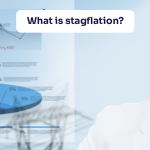The Secured Overnight Financing Rate (SOFR) is the benchmark for financial instruments that are denominated in US dollars. This affects how people borrow and lend money around the world.
Indian investors, businesses, and banks must know what the SOFR rate is. As Indian businesses keep getting money from other countries, issuing bonds, or doing business across borders, it becomes more and more important to understand the SOFR full form, how it is calculated, and what it means. The secured overnight financing rate is now one of the most important things that affect global liquidity, the prices of financial contracts, and the risk levels of borrowers and lenders.
The secured overnight financing rate, or SOFR, represents the cost of borrowing cash overnight using United States Treasury securities as collateral within the repurchase agreement (repo) market. Unlike its predecessor, the London Interbank Offered Rate (LIBOR), which relied on estimates from selected banks, SOFR is a transaction-based benchmark. This means it reflects actual trades, making it less prone to manipulation and a more accurate representation of market conditions.
SOFR is calculated from three distinct segments of the Treasury repo market:
The Federal Reserve Bank of New York publishes the SOFR rate each business day at approximately 8:00 AM Eastern Time. The sheer scale of data used to calculate the rate is noteworthy, as more than USD 1 trillion in transactions are included daily. This volume ensures that SOFR is both representative and difficult to manipulate.
For those asking “what is SOFR?”, the answer lies in recognising it as a nearly risk-free reference rate that has replaced LIBOR in numerous financial contracts, including loans, derivatives, and securities.
The path to establishing SOFR has its roots in the 2008 global financial crisis. When investigations uncovered manipulation within LIBOR submissions, regulators worldwide sought a more transparent and reliable benchmark.
The timeline of SOFR’s development highlights this transition:
This carefully managed timeline ensured that financial markets had adequate time to adjust contracts and systems. The secured overnight financing rate is now recognised as the global standard for US dollar borrowing.
SOFR is determined using a volume-weighted median approach. This ensures that the largest transactions in the repo market have greater influence, yet the measure remains representative of overall conditions. The process includes:
Beyond the overnight rate, the New York Fed also publishes SOFR Averages (30-day, 90-day, and 180-day) and a SOFR Index, which measures compounded rates over custom periods. These additions allow institutions to structure longer-term products, providing flexibility and stability for borrowers and lenders alike.
Any change in the secured overnight financing rate has an effect on the whole world of finance. When the SOFR rate goes up, it usually means that monetary policy is getting tighter, which makes borrowing more expensive. This has an effect on corporate bonds, floating-rate loans, and SOFR-linked derivative products.
Key implications include:
For Indian businesses, rising SOFR can mean higher working capital costs and a need to reconsider hedging strategies. Conversely, a lower SOFR encourages capital flows into emerging markets like India, potentially boosting equity valuations and improving financing conditions.
SOFR holds global significance because of its scale and credibility. Its importance lies in five dimensions:
For Indian market participants, knowing “what is SOFR” is vital because it informs decisions on dollar borrowings, hedging exposures, and assessing foreign portfolio investment flows.
Consider an Indian multinational corporation securing a USD 500 million floating-rate loan to expand operations in the United States. The loan terms are structured as 3-month Term SOFR plus 250 basis points.
| Quarter 2025 | 3-Month Term SOFR | Credit Spread | Total Rate | Quarterly Interest Payment |
| Q1 | 4.25% | 2.50% | 6.75% | USD 8.44 million |
| Q2 | 4.40% | 2.50% | 6.90% | USD 8.63 million |
| Q3 | 4.35% | 2.50% | 6.85% | USD 8.56 million |
| Q4 | 4.30% | 2.50% | 6.80% | USD 8.50 million |
This example highlights how fluctuations in the SOFR rate directly alter financing costs. For corporates, a sound understanding of the secured overnight financing rate allows better planning and implementation of hedging strategies.
There is a direct link between SOFR and foreign portfolio investment (FPI) flows. When the SOFR rate goes up, US assets become more appealing, which causes money to leave emerging markets like India. On the other hand, when SOFR goes down, investors often look for higher returns in Indian stocks and bonds.
Changes in the SOFR affect the USD-INR exchange rate, which has bigger effects on inflation and trade balances. When the SOFR goes up, the dollar gets stronger, which makes the rupee weaker.
Indian companies that do business all over the world are directly affected by SOFR through loans in US dollars. Plans for capital allocation and investment must take into account the cost of borrowing compared to the expected returns. So, predicting the secured overnight financing rate is very important for long-term planning.
The secured overnight financing rate is a key part of modern finance. It has made a market that used to be worried about manipulation more stable and clear. The switch from LIBOR to SOFR was a big deal, and its use has changed the prices of trillions of dollars' worth of financial instruments.
Indian investors and businesses need to know what SOFR stands for, how it works, and what it means for the world in general. This is no longer just theoretical knowledge. The SOFR rate affects everything, from the flow of money into foreign portfolios to the cost of borrowing for businesses and the value of currencies.
As India becomes more involved in global markets, people who know about the secured overnight financing rate will be better able to deal with risks, take advantage of opportunities, and stay strong. People who work in India's financial system need to know the answer to the question "what is SOFR?" and will need to keep learning about it in the years to come.

Midcaps: Sweet Spot or Danger Zone? | What HSBC MF’s Cheenu Gupta Thinks | Ventura Spotlight
5 min Read Dec 17, 2025
Understanding Option Pin risk near expiry
5 min Read Dec 12, 2025
EPS in the Stock Market
5 min Read Dec 12, 2025
What is stagflation?
5 min Read Dec 10, 2025
Did Andhra Pradesh Just Trigger India’s Next Spirits Boom?
5 min Read Dec 10, 2025